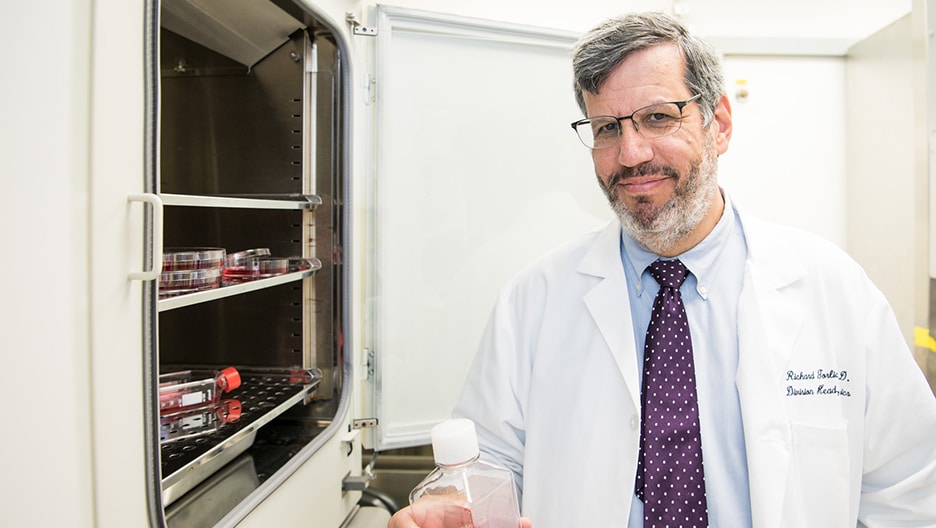“At the end of the day, our committee is meant to drive science. It should continue to make new discoveries.”
Richard Gorlick, M.D., Chair of OSI’s SCIENTS Committee
Since the founding of the Scientific Correlates and Innovative, Emerging New Technologies (SCIENTS) Committee in 2020, Richard Gorlick, MD, has been at the helm as chair, bringing the best minds in osteosarcoma research and science together. This year, he will pass the torch to Brian Crompton, MD, a pediatric oncologist at Boston Children’s Hospital and the Research Co-Director of the Solid Tumor Center at Dana-Farber Cancer Institute.
“Dr. Crompton is someone I have deep respect for, and who will do great work leading the SCIENTS Committee,” says Dr. Gorlick, chair and division head of Pediatrics at The University of Texas MD Anderson Cancer Center. Luckily for OSI, Dr. Gorlick will continue to be a part of the organization’s Strategic Advisory Board, and Brokers of Osteosarcoma Progress (BOP) and SCIENTS Committees.

We spoke with Dr. Gorlick about what is so meaningful about the SCIENTS Committee, its focus, and what he thinks is the committee’s biggest accomplishment thus far.
What is the focus of the SCIENTS Committee?
The SCIENTS Committee is all about how science can advance clinical trials and improve the care for osteosarcoma patients. By connecting with clinicians, organizations and institutions, we are able to collect tissue samples from all over the country. Our committee then analyzes them for untapped information. We ask ourselves, “What can help inform clinical trials as well as what can we learn from them?” Our focus is on every stage of correlative biology.
What is correlative biology?
Great question. Correlative biology is understanding what’s happening in patients that inform researchers about why treatment may have worked and why treatment may not have worked. We need to learn from our failures. And osteosarcoma, unfortunately, has failures too often. It is a really difficult disease, but as long as we are still learning from it, we are going to get closer to treatment success.
Why are samples so critical to the SCIENTS Committee’s work?
Samples provide us with valuable patient data. The SCIENTS Committee works with the Children’s Oncology Group (COG), which collects osteosarcoma patient samples from all over the country. That has been a longstanding partnership. But people are being innovative about how they approach getting samples from everybody. One of our committee members, Corrie Painter, PhD, has launched an initiative called Count Me In, which is adding to our access to patient samples. So, having that quantity of samples to work from is crucial.
The other side of that coin is the diversity of samples. That is something that we will have to continue working toward, in terms of understanding if and how osteosarcoma affects races and ethnicities differently. It is a question — among many in osteosarcoma research — that remains to be answered.
You have led this committee since its inception. What has been your biggest accomplishment?
From the beginning, my goal was to bring people together to focus on osteosarcoma. As a researcher and a scientist, I have come to learn that you do not have to generate all the ideas yourself. The ideas come from the people you incorporate and your collaboration with them. I think my biggest accomplishment with the SCIENTS Committee was expanding its membership so that we represent more branches of science.
At the end of the day, our committee is meant to drive science. It should continue to make new discoveries. I think the key is utilization and engaging more experts in trying to acquire samples, as well as using them in innovative ways.
What has the SCIENTS Committee learned from decades of osteosarcoma research?
We are recognizing that it requires more than a “one-size-fits-all” treatment approach. Dr. Paul Meltzer of the National Cancer Institute used this analogy: Osteosarcomas are like a snowflake. When you see a snowflake, it has a common pattern and looks like every other snowflake. But if you zoom in closely and compare one to the other, they are all unique. That, to me, is an understanding of osteosarcoma that we did not have 20 years ago. Back then, we would give the same treatment to every osteosarcoma patient, expecting it to work in everybody. But that just is not the case.
Today, a lot of attention is being paid to epigenomics, the study of the genetic underpinnings of each individual cell. The question now is, ‘How we can apply those technologies in terms of treatment?’ It is an exciting time.
You are soon passing the torch to Dr. Crompton. What brings you hope in this leadership transition?
To keep leadership dynamic, the biggest thing is transition. We have accomplished a lot in the SCIENTS Committee, and I am proud of it. But let us see what ideas the next person has. I am extremely confident that Dr. Crompton will bring new ideas and a fresh perspective to the osteosarcoma landscape.
Read more stories about the people powering OSI in The Frontline, our monthly newsletter. Click here to subscribe.
